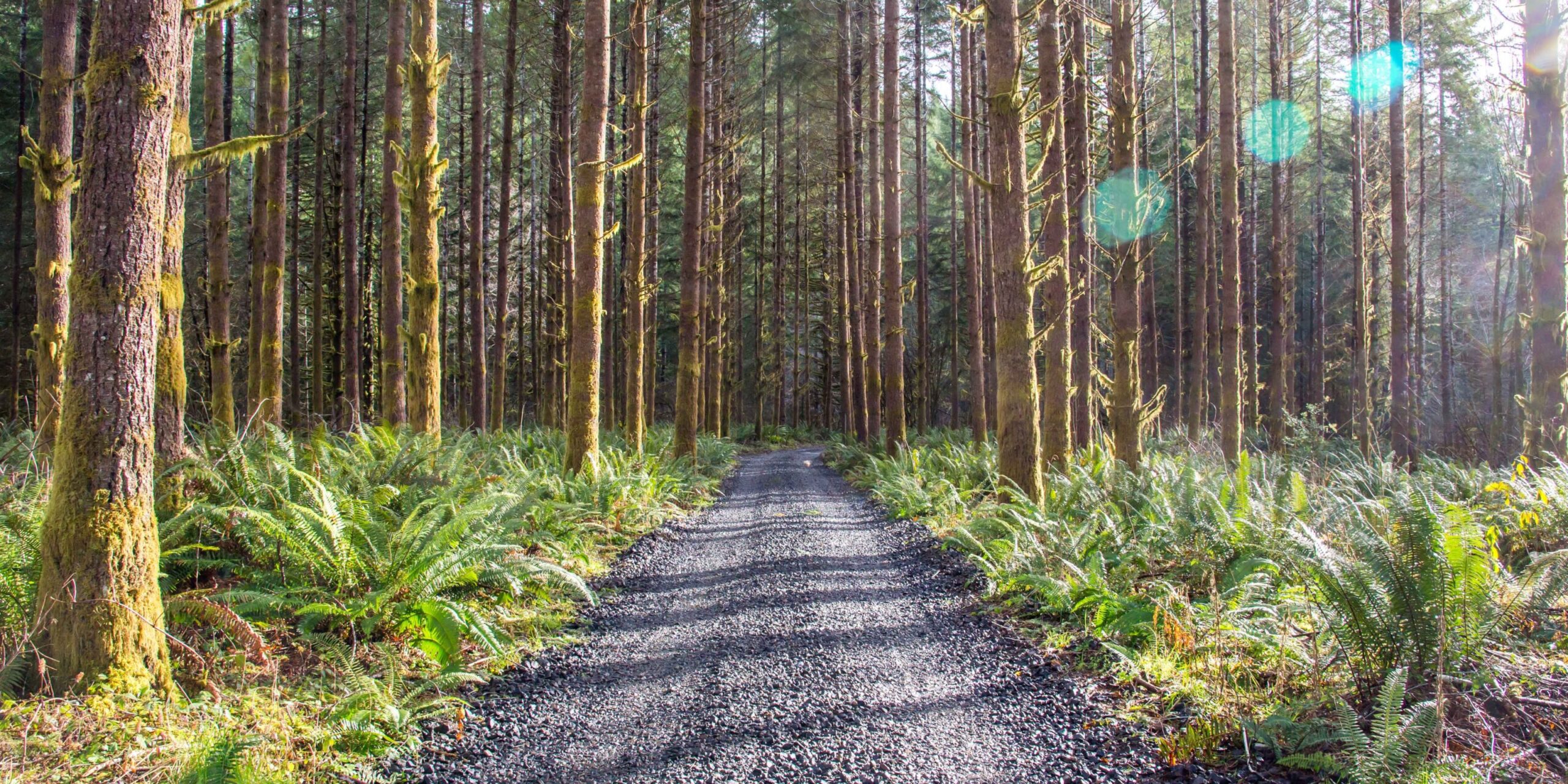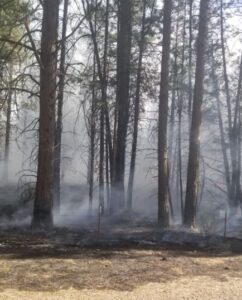
Work. Play. Renew.
What Is a Controlled Burn?
There is no escaping the reality that wildfires are among the most devastating and dangerous events that can occur in a forest. All it takes is for a single spark—sometimes natural and sometimes the result of careless human activity—and in no time at all, it seems like the entire forest is ablaze. This is obviously extremely destructive to the ecosystem of the forest itself, but an out-of-control forest fire can also negatively impact humans for miles around. Nearby homes will be put at risk, and the ash and smoke can exacerbate health conditions. With all of this in mind, it’s no wonder the state of Oregon and other entities spend millions of dollars a year on wildfire prevention and suppression.
 With all of this in mind, you might be surprised to hear that authorities will sometimes cause deliberate fires in an area, an action referred to as a controlled burn. Also known as a prescribed fire, a controlled burn is a method of preventing wildfires from taking hold in an area and doing excessive damage to the local flora and fauna by deliberately burning underbrush. Below, we’ll discuss why controlled burns are done, how they are performed and their important role in mitigating the spread of wildfires.
With all of this in mind, you might be surprised to hear that authorities will sometimes cause deliberate fires in an area, an action referred to as a controlled burn. Also known as a prescribed fire, a controlled burn is a method of preventing wildfires from taking hold in an area and doing excessive damage to the local flora and fauna by deliberately burning underbrush. Below, we’ll discuss why controlled burns are done, how they are performed and their important role in mitigating the spread of wildfires.
There Are Good Fires and Bad Fires
While you are certainly aware of the damage that fire can do, you may not know that fire can provide many benefits. After all, we’ve used fire for thousands of years to stay warm, cook our food, and manufacture goods. Fire also serves a critical role in nature, and occasional forest fires are a natural part of the life cycle of a forest.
Consider what a fire uses as its fuel source: dead wood, brush, dried-out foliage and other plant matter. Too much dead, dried-out plant material is actually harmful to a forest since it prevents new trees and other plants from taking hold. Natural forest fires, which can be caused by lightning strikes or sunlight, help to clear out this excessive buildup of foliage. The process of burning also helps the nutrients return to the soil, ensuring that it is healthy for the next generation of plant life. Not only that, certain plants actually depend on fires for their survival. Certain pinecones require the heat of a fire to expose the seeds that are inside, allowing the next generation of trees to grow.
Problems occur, however, when fires either endanger human communities or grow out of control, often as a result of human activity. For example, humans have a tendency to cause forest fires during extremely dry times of the year when fires are likely to get out of control with improperly extinguished campfires, carelessly discarded cigarette butts and many other actions. The ongoing threat of climate change has led to droughts and excessive heat, meaning that there is more fuel for wildfires, which has led to a rise in uncontrolled and dangerous forest fires.
Benefits of a Controlled Burn
Controlled burns are one way to stop wildfires from spreading out of control and doing excessive harm to a forested area. They are started by fire prevention experts and planned around local weather patterns during times of the year when moisture levels are not at their lowest, with an eye toward carefully controlling their spread and mitigating the dangers they pose to the local environment.
Unlike a wildfire, which can cause incredible destruction, a controlled burn is a far lower-intensity fire. Its primary purpose is to clear away the buildup of dead plant matter and other dry brush so that more powerful and dangerous forest fires do not have a fuel source when the weather becomes more likely to cause a deadly blaze. As we mentioned above, these controlled fires can also boost the health of the soil, allowing future plant life to thrive in an area.
How It’s Done
As the name suggests, the key factor in a controlled burn is maintaining control over the fire and where it goes. There are several ways that trained officials do this. First and foremost, controlled burns are done during times of the year considered the “off-season”—usually not during the hot, dry summer months. Second, they will consult with meteorologists and other weather experts to plan the burn during ideal weather conditions that keep smoke out of communities. For example, if it’s particularly windy, the burn will most likely not take place, as the wind can easily spread embers and smoke to places where they should not be allowed to go. Usually, windy areas are high-risk locations that would otherwise be vulnerable to an out-of-control wildfire.
Once the location has been selected, trained forestry workers will often mechanically clear away some of the plants and trees that pose the greatest risk of burning out of control. Then, to further clean up what remains, a controlled burn is initiated. The fire itself can be set in one of two ways. Either the brush and plant matter can be organized into piles, which are then burned, or the fire is set directly on the designated area of land. In either case, the controlled fire team takes great care to inform locals of what is occurring and how to stay safe while the burn takes place.
If You Have Further Questions
A controlled burn is only one element of an effective fire-prevention program. An equally important element is outreach education, helping to inform the public of the steps they can take toward wildfire prevention. This is one of the primary goals of Oregon Forests Forever, which seeks to improve the understanding and relationship that Oregonians have with their forests. To this end, if you have any questions about controlled burns or any other aspect of forest conservation, explore our website and connect with our team. We’d love to hear from you.